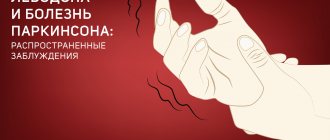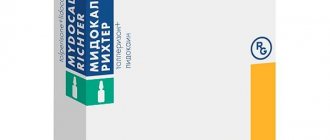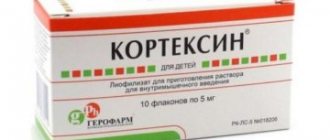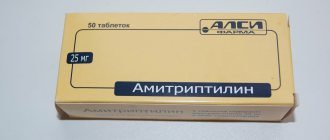Release form
Channel PROGRAMMER'S DIARY
The life of a programmer and interesting reviews of everything. Subscribe so you don't miss new videos.
"Relium" is dispensed from pharmacies in three dosage forms:
- Transparent liquid in ampoules of 2 ml for intravenous and intramuscular administration. It is allowed to change the color of the liquid substance to transparent yellow or transparent greenish shades. The cardboard packaging contains 1, 2 or 10 contour cells with ampoules inserted into them (5 pieces each).
- Injection solution, sealed in ampoules of 2 ml. A contour cell contains 5 ampoules, and a cardboard package contains 1 or 10 cells.
- Relium tablets are packaged in 20 pieces in a contour cell placed in a cardboard box.
You will be interested in: Trigelm dietary supplement: reviews, instructions for use and composition
In pharmacy retail sales there is only such a minimum blister packaging of tablets.
Dosage forms
Diazepam (lat.
Diazepam) is a white or ivory powder
, odorless, insoluble in water, soluble in alcohol and chloroform.
It is sold in the form of tablets, dragees (coated tablets), solution for intramuscular/intravenous injection, and rectal suppositories.
Analogues of Diazepam: Apaurin, Valium Roche, Diazepabene, Diazepam Nycomed, Diazepam-ratiopharm, Diazepam Teva, Diazepex, Diapam, Relanium®, Relium, Seduxen, Sibazon.
Compound
You may be interested in: "Siafor 500" for weight loss: reviews of use
The main active ingredient in all forms of the drug is diazepam in the same dosage - 5 mg. The remaining elements of the Relium composition are auxiliary.
1 ml of liquid for intramuscular administration contains auxiliary components:
- propylene glycol;
- benzoic acid;
- benzyl alcohol;
- ethanol;
- water for injections;
- sodium benzoate.
1 tablet contains auxiliary components:
- lactose;
- quinoline yellow E104;
- magnesium stearate;
- talc;
- twin 80;
- gelatin;
- starch.
For ease of swallowing, each tablet is enclosed in a lactose-free coating (information for allergy sufferers). Instructions for use and reviews of Relium do not indicate cases of adverse reactions to the components of the tablet shell.
Contraindications
A drug with such an impressive list of side effects, of course, has contraindications. Diazepam and analogues are contraindicated in the following conditions: acute diseases of the excretory system (liver, kidneys), diseases of the cardiovascular system in the stage of decompensation, glaucoma, pregnancy (has a teratogenic effect!), suicidal tendencies, sleep apnea syndrome, breastfeeding, spinal ataxia, hypercapnia, history of increased individual sensitivity to Diazepam analogues , early childhood), alcohol/drug dependence.
The instructions for Diazepam indicate that self-administration of the drug in any of its dosage forms is categorically unacceptable; its incorrect use in pediatric practice, taking it strictly as prescribed by a doctor, is especially dangerous.
Indications
The drug should be used only for appropriate indications, taking into account possible side effects, age and condition of the patient. Indications for "Relium" are:
- pursuing anxiety, a constant or flaring state of causeless fear;
- neuroses, manifested in increased excitability, hysteria, panic attacks;
- insomnia, various sleep disorders;
- abrupt cessation of alcohol in case of alcoholism stage 2 or 3;
- relieving tension, fear, and excitement before upcoming surgery or complex medical procedures;
- epilepsy;
- difficult childbirth;
- tetanus.
You will be interested in: “Bilobil”: reviews, indications, instructions, composition, analogues
When it comes to relieving acute nervous and pain symptoms during difficult labor, it should be understood that a residual substance will be present in breast milk.
Scope of application
Indications for the use of Relanium are the following diseases:
- neuroses with pronounced anxiety;
- neurotic conditions;
- as part of complex treatment of epilepsy;
- to relieve convulsive readiness of the brain and other convulsive conditions;
- relief of epistatus;
- when relieving excitement, manifested in an anxious state;
- tetanus;
- neuromuscular diseases accompanied by spasms and increased muscle tone;
- insomnia;
- as a combination treatment of dystrophy;
- bursitis, arthritis and arthrosis, accompanied by muscle spasms;
- Meniere's disease;
- skin diseases accompanied by itchy skin;
- headaches of various origins;
- climacteric disorders;
- premenstrual syndrome;
- angina pectoris and arrhythmia, as part of complex therapy.
The drug can also be used for pain relief and premedication during various medical procedures, including diagnostic ones, in obstetrics and gynecology, and surgical practice.
Absolute contraindications
Instructions for use of "Relium" and reviews from doctors have identified the following categories of contraindications to the use of the drug - absolute, that is, not allowing exceptions, and relative, suggesting that the attending physician independently assess the risks of using the drug.
The absolute prohibitions include the following factors:
- respiratory failure of any origin;
- dizziness;
- pregnancy and lactation;
- myasthenia gravis;
- glaucoma;
- depression and nervous disorders suggesting suicide attempts;
- child's age up to five weeks;
- individual intolerance to the components of the drug.
In addition to the above, there are a number of contraindications that do not allow the use of the parenteral form of the drug. This is severe alcohol poisoning requiring hospitalization; head injuries of varying complexity; comatose, shock state.
RELIUM
| Film-coated tablets | 1 tab. |
| diazepam | 5 mg |
20 pcs.
– contour cell packaging (1) – cardboard packs. 20 pcs. – blisters (1) – cardboard packs. 12000 pcs. – plastic bags (1) – polypropylene cans. 17000 pcs. – plastic bags (1) – polypropylene cans.
6000 pcs.
– plastic bags (1) – polypropylene cans.
pharmachologic effect
Tranquilizer, benzodiazepine derivative. It has an anxiolytic, sedative, anticonvulsant, and central muscle relaxant effect. The mechanism of action is associated with an increase in the inhibitory effect of GABA in the central nervous system. The muscle relaxant effect is also due to inhibition of spinal reflexes. May cause anticholinergic effects.
Pharmacokinetics
Absorption is fast. Cmax in plasma is observed after 90 minutes. Plasma protein binding is 98%. Penetrates through the placental barrier, into the cerebrospinal fluid, and is excreted in breast milk. Metabolized in the liver. Excreted by the kidneys - 70%.
Indications
Neuroses, borderline states with symptoms of tension, anxiety, anxiety, fear; sleep disorders, motor agitation of various etiologies in neurology and psychiatry, withdrawal syndrome in chronic alcoholism; spastic conditions associated with damage to the brain or spinal cord, as well as myositis, bursitis, arthritis, accompanied by skeletal muscle tension; status epilepticus; premedication before anesthesia; as a component of combined anesthesia; relief of labor, premature birth, premature placental abruption; tetanus.
Contraindications
Hypersensitivity to diazepam and other benzodiazepine derivatives, severe myasthenia gravis, coma, shock, closed-angle glaucoma, history of addiction (drugs, alcohol, with the exception of treatment of alcohol withdrawal syndrome and delirium), sleep apnea syndrome, state of acute alcohol intoxication with depression of vital signs important functions, acute intoxication with drugs that have a depressing effect on the central nervous system (narcotic, hypnotic and psychotropic drugs), severe chronic obstructive pulmonary diseases (risk of progression of respiratory failure), acute respiratory failure; pregnancy (especially the first trimester), breastfeeding period; for oral administration – children under 6 years of age; for parenteral use – children up to 5 weeks of age.
Carefully:
absence seizure (petitmal) or Lennox-Gastaut syndrome; epilepsy, hepatic and/or renal failure, cerebral and spinal ataxia, hyperkinesis, tendency to abuse psychotropic drugs, organic brain diseases (paradoxical reactions are possible), hypoproteinemia, old age, depression.
Dosage
Used orally, intramuscularly, intravenously, rectally. The daily dose varies from 500 mcg to 60 mg. A single dose, frequency and duration of use are set individually, depending on the indications and dosage form.
From the nervous system:
at the beginning of treatment (especially in elderly patients) - drowsiness, dizziness, increased fatigue, impaired concentration, ataxia, disorientation, slowed mental and motor reactions, anterograde amnesia; less often - headache, euphoria, decreased mood, tremor, catalepsy, confusion, dystonic extrapyramidal reactions (uncontrolled body movements), asthenia, muscle weakness, hyporeflexia, dysarthria; extremely rarely - paradoxical reactions (aggressive outbursts, psychomotor agitation, suicidal tendencies, muscle spasms, confusion, hallucinations, anxiety, sleep disturbances). After IV administration, hiccups are sometimes observed. With prolonged use, drug dependence and memory impairment may develop.
From the hematopoietic system:
leukopenia, neutropenia, agranulocytosis (chills, pyrexia, sore throat, unusual fatigue or weakness), anemia, thrombocytopenia.
From the digestive system:
dry mouth or hypersalivation, heartburn, hiccups, gastralgia, nausea, vomiting, loss of appetite, constipation; liver dysfunction, increased activity of liver transaminases and alkaline phosphatase, jaundice.
From the cardiovascular system:
palpitations, tachycardia, decreased blood pressure.
From the reproductive system:
rarely - increased or decreased libido, dysmenorrhea.
From the urinary system:
rarely - urinary incontinence or retention, renal dysfunction.
Allergic reactions:
rarely – skin rash, itching.
Effect on the fetus:
teratogenicity (especially the first trimester), central nervous system depression, respiratory failure and suppression of the sucking reflex in newborns whose mothers used the drug.
Other:
addiction, drug dependence; rarely - depression of the respiratory center, visual impairment (diplopia), bulimia, weight loss.
Drug interactions
When used simultaneously with drugs that have a depressant effect on the central nervous system (including neuroleptics, sedatives, hypnotics, opioid analgesics, anesthetics), the depressant effect on the central nervous system, on the respiratory center, and severe arterial hypotension increases.
When used simultaneously with tricyclic antidepressants (including amitriptyline), it is possible to enhance the inhibitory effect on the central nervous system, increase the concentration of antidepressants and enhance the cholinergic effect.
In patients receiving long-term centrally acting antihypertensive drugs, beta-blockers, anticoagulants, cardiac glycosides, the degree and mechanisms of drug interaction are unpredictable.
When used simultaneously with muscle relaxants, the effect of muscle relaxants is enhanced and the risk of apnea increases.
When used simultaneously with oral contraceptives, the effects of diazepam may be enhanced. The risk of breakthrough bleeding increases.
When used simultaneously with bupivacaine, it is possible to increase the concentration of bupivacaine in the blood plasma; with diclofenac – increased dizziness is possible; with isoniazid – decreased excretion of diazepam from the body.
Drugs that cause induction of liver enzymes, incl. antiepileptic drugs (carbamazepine, phenytoin) can accelerate the elimination of diazepam.
When used simultaneously with caffeine, the sedative and possibly anxiolytic effect of diazepam is reduced.
When used simultaneously with clozapine, severe arterial hypotension, respiratory depression, and loss of consciousness are possible; with levodopa – suppression of antiparkinsonian effect is possible; with lithium carbonate – a case of the development of a coma is described; with metoprolol – decreased visual acuity and worsening psychomotor reactions are possible.
When used simultaneously with paracetamol, it is possible to reduce the excretion of diazepam and its metabolite (desmethyldiazepam); with risperidone – cases of the development of NMS have been described.
When used simultaneously with rifampicin, the excretion of diazepam increases due to a significant increase in its metabolism under the influence of rifampicin.
Theophylline in low doses distorts the sedative effect of diazepam.
When used simultaneously in rare cases, diazepam suppresses metabolism and enhances the effect of phenytoin. Phenobarbital and phenytoin may accelerate the metabolism of diazepam.
When used concomitantly, fluvoxamine increases plasma concentrations and side effects of diazepam.
When used simultaneously with cimetidine, omeprazole, disulfiram, it is possible to increase the intensity and duration of action of diazepam.
When taking ethanol and ethanol-containing drugs simultaneously, the inhibitory effect on the central nervous system (mainly on the respiratory center) increases, and pathological intoxication syndrome may also occur.
special instructions
Particular caution is required when prescribing diazepam for severe depression, because diazepam can be used to realize suicidal intentions.
In case of renal/liver failure, as well as during long-term treatment, it is necessary to monitor the peripheral blood picture and liver enzymes.
The risk of developing drug dependence increases when using high doses of diazepam, a significant duration of treatment, and in patients who have previously abused alcohol or drugs. Should not be used for a long time without special instructions. Abrupt cessation of treatment is unacceptable due to the risk of “withdrawal syndrome”.
If patients experience reactions such as increased aggressiveness, psychomotor agitation, anxiety, fear, thoughts of suicide, hallucinations, increased muscle cramps, difficulty falling asleep, shallow sleep while taking diazepam, treatment should be stopped.
Use with extreme caution in patients with cardiac and respiratory failure, organic changes in the brain (in such cases it is recommended to avoid parenteral administration of diazepam), with angle-closure glaucoma and a predisposition to it, with myasthenia gravis.
Particular caution is required when using diazepam, especially at the beginning of treatment, in patients who have been receiving centrally acting antihypertensive drugs, beta-blockers, anticoagulants, and cardiac glycosides for a long time.
When discontinuing therapy, the dose should be reduced gradually. If diazepam is suddenly discontinued after long-term use, anxiety, agitation, tremor, and convulsions may occur.
Initiation of treatment with diazepam or its abrupt withdrawal in patients with epilepsy or with a history of epileptic seizures may accelerate the development of seizures or status epilepticus.
After an intramuscular injection of diazepam, an increase in CPK activity in the blood plasma is possible (which should be taken into account in the differential diagnosis of myocardial infarction).
Avoid intravenous administration.
During the treatment period, avoid drinking alcohol.
Impact on the ability to drive vehicles and operate machinery
Diazepam may cause a slowdown in the speed of psychomotor reactions, which should be taken into account in patients engaged in potentially hazardous activities.
Pregnancy and lactation
Contraindicated for use during pregnancy (especially the first trimester) and during breastfeeding.
Diazepam has a toxic effect on the fetus and increases the risk of birth defects when used in the first trimester of pregnancy. Taking therapeutic doses later in pregnancy may cause depression of the fetal central nervous system.
Chronic use during pregnancy may lead to physical dependence - possible withdrawal symptoms in the newborn.
The use of diazepam in doses above 30 mg within 15 hours before or during labor can cause respiratory depression in the newborn (before apnea), decreased muscle tone, decreased blood pressure, hypothermia, and weak sucking (“floppy baby syndrome”).
Use in childhood
Contraindicated for oral use in children under 6 years of age, for parenteral use in children under 5 weeks of age.
In newborns, the enzyme system involved in the metabolism of diazepam has not yet fully developed.
For impaired renal function
Use with caution in patients with renal failure.
For liver dysfunction
Use with caution in patients with liver failure.
Use in old age
Prescribe with caution to elderly patients to avoid worsening the course of concomitant diseases.
The description of the drug RELIUM is based on the officially approved instructions for use and approved by the manufacturer.
Found an error? Select it and press Ctrl+Enter.
Source: //health.mail.ru/drug/relium/
Relative contraindications
Using extreme caution and under strict diagnostic control, the drug is prescribed to patients with the following pathologies:
- brain diseases not associated with trauma;
- kidney and liver diseases;
- epilepsy or isolated cases of seizures in the medical history;
- hyperkinesis;
- hypoproteinemia;
- psychoses of various etiologies;
- cases of respiratory arrest during night sleep.
Since Relium is used to treat insomnia, which often plagues older people, the relative contraindication not to prescribe the drug after 60 years of age is observed only if there is evidence of other reasons for discontinuing the drug.
pharmachologic effect
Relanium is a tranquilizer with a benzodiazepine active substance.
The anxiolytic effect manifests itself in the relief of anxiety, anxiety, fear and emotional stress. There are three groups of anxiolytics. The drug in question belongs to the second generation anxiolytics. To date, their effect has not been fully studied. But the main manifestations of the drug’s work are expressed in the effect on the subcortical areas of the human brain. The hypothalamus and thalamus, in particular, are responsible for emotional reactions in the human body.
The drug is prescribed against seizures, as a sedative, as a hypnotic and a muscle relaxant.
The sedative effect is based on the effect on the brain stem and thalamus. This reduces feelings of fear, worry and anxiety. To achieve a hypnotic effect, brain cells are inhibited.
When used as an anticonvulsant drug, it is important to know that Relanium only relieves spreading epileptogenic activity. But the excited focus does not go away.
When used as a muscle relaxant, there is the possibility of direct inhibition of nerves and muscles. A pronounced effect is observed after at least two days of use, in some cases – after a week.
Possible decrease in blood pressure and decreased sensitivity. Does not affect symptoms of a psychotic nature.
Use during pregnancy
You may be interested in: Anatomy of the cervical vertebra.
How many vertebrae are there in the cervical spine Prescribing the drug to a pregnant woman is an exceptional situation in which the importance of helping the mother significantly outweighs the risk of developing pathologies in the fetus. The period of the first trimester is especially dangerous, when the child’s central nervous system and internal organs are rapidly developing. "Relium", taken in a traditional dosage in the first trimester, acts on the embryo as a strong toxic substance and often causes serious birth defects.
In the second and third trimester, the standard dosage of Relium taken by the expectant mother can affect the state of the baby’s nervous system.
General information about the drug Relium
Relium is a standard psycholeptic of European quality. It is produced in Warsaw (Poland) at the Polfa pharmaceutical concern. The medication has a combined effect, providing anticonvulsant and sedative effects. The drug is on the list recommended for availability in medical institutions compiled by the World Health Organization.
Drug group, INN, scope of application
Relium belongs to the pharmacological group of psycholeptic drugs, a subgroup of anxiolytics, benzodiazepine derivatives. A special feature of this group is that all drugs included in its composition are sold strictly according to prescription. International nonproprietary name (INN) is Diazepam.
The drug is actively used in psychiatric, neurological and drug addiction practices. It can also be used in selected clinical cases of infectious diseases.
Release forms
Available in the form of film-coated tablets. Each tablet is round, biconvex, yellow in color. Dosage is exclusively 5 mg.
The price of medicine in Russian pharmacies differs slightly.
| A drug | Pharmacy name, city | Price in rubles |
| Relium 5 mg, No. 20 | APTEKA LLC, St. Petersburg | 40 |
| Pharmaceutical Leasing LLC, St. Petersburg | 39 | |
| WER.RU, Moscow | 31.9 | |
| Farmalizing LLC, St. Petersburg | 27.5 | |
| Apteka.ru, Smolensk | 31 | |
| Low price pharmacy, Moscow | 33 | |
| Apteka.ru, Orel | 3410 | |
| Laboratory of beauty and health, Moscow | 38 | |
| Online pharmacy GORZDRAV, Moscow and region | 30 |
Composition of Relium
The active substance of the drug is diazepam. This component is a chemical derivative of 1,4-benzodiazepine. It has the ability to influence the GABAergic system, changing its sensitivity. The amount of diazepam in a tablet is directly proportional to its dosage. Auxiliary components are:
- potato starch;
- dry gelatin;
- yellow quinoline dye (E 104);
- talc;
- magnesium stearate;
- sodium starch glycolate.
The coating covering the tablet consists of cellulose acetate phthalate, polyethylene glycol 6000.
Pharmacodynamics and pharmacokinetics
The basis of the mechanism of action of Relium is the pharmacodynamic effects of diazepam. The medication has a direct effect on all components of the central nervous system. While taking the medication, changes occur especially actively in the centers of the brain responsible for emotionality - these are, directly, the limbic system and the hypothalamus.
Relium has an inhibitory effect on neurons of the GABAergic system located in the cerebral cortex, hippocampus, and cerebellum. As a result of this, there is a change in the activity of various groups of neurons: dopamine, norepinephrine, serotonin and cholinergic. Against the background of all these processes, the sensitivity and susceptibility to stimuli of the GABA receptor changes, which leads to an increase in its affinity for gamma-aminobutyric acid, which itself is an internal inhibitory transmitter.
Thanks to the combination of these processes, complex sedative effects occur: feelings of fear and anxiety are eliminated, muscle tension is reduced, and sleep improves.
Relium is absorbed by the mucous membrane of the gastrointestinal tract. Metabolism occurs in the liver. Here the active component begins to be divided into two components - N-desmethyl-diazepam and N-methyloxazepam. These, in turn, are converted to oxazepam, which has an affinity for glucuronic acid. Its half-life is a day or two. In the form of these metabolites, the drug is excreted from the body in the urine.
The peak concentration of the drug in the circulatory system occurs an hour after taking the tablet. Relium has the ability to penetrate the blood-brain and placental barrier.
Instructions for use of tablets
Treatment with diazepam never begins with average dosages - the first doses of the drug are carried out in doses that show the least effect. This is required to establish a lower threshold of sensitivity to the drug, based on which the doctor makes a gradual increase in the daily norm.
Tablets are taken regardless of food in the following doses for adults:
- Anxiety, paranoid states, fear - 1 tablet every 24 hours. It is possible to increase the daily dose to 30 mg by dividing this amount of the drug into 2-3 doses.
- When treating insomnia, give 5 to 15 mg of the drug half an hour before going to bed.
- The spastic condition of the patient implies a minimum single dose of Relium in a dosage of 5 mg, or several doses of 5 mg with a maximum volume of the drug per day of up to 60 mg.
- As preparation for surgery or a complex therapeutic procedure, 5 to 20 mg of the drug is prescribed in one single dose.
- Stressful condition associated with a sharp cessation of alcohol - 30 mg per day, divided into 3 doses; it is possible to increase the daily dose to 60 mg.
When prescribing a medication, they try to shorten the course period as much as possible so that the patient does not develop an addiction to the drug. The maximum permissible threshold above which they try not to prescribe diazepam is 30 days of continuous treatment. The exception is serious sleep disorders and states of unexplained anxiety, in which the course is extended to three months with a gradual increase and then a decrease in the indicated dose.
Indications for use of Relium
According to the instructions, Relium is prescribed for:
- Neuroses, borderline states with symptoms of fear, anxiety, tension, anxiety;
- Preparation for operations and diagnostic procedures;
- Sleep disorders;
- Alcohol withdrawal syndrome, to reduce symptoms of agitation;
- Motor excitation of various etiologies.
In addition, Relium is used in complex therapy in the treatment of diseases that are associated with increased skeletal muscle tone, including spastic conditions after cerebral strokes, as well as in the treatment of epilepsy when used simultaneously with other anticonvulsants.
Instructions for use of solutions
Injection solutions are used unchanged only for intramuscular administration. For intravenous drip administration, 100 mg (or 10 ampoules) of Relium are combined with 500 ml of a ready-made 5% glucose solution or saline and the device is set at an infusion rate of 40 ml/hour. For administration into a vein through a syringe, the drug (1 ampoule) is also combined with glucose or saline, bringing the volume of the resulting liquid to 10 ml. The rate of administration in this case is 4 ml per 1 minute.
Average standards for adult patients:
- Paranoid, obsessive disorders, phobias and sleep disorders - intravenously or intramuscularly - from 5 to 10 mg once a day; If necessary, you can re-administer, but not earlier than after 3 hours.
- When giving up alcohol in the process of addiction treatment, stress is relieved by a single administration of 10 mg of the drug in a convenient way.
- Muscle spasms and similar disorders - administration intramuscularly or intravenously from 5 to 10 mg.
- In preparation for surgery - intravenously from 10 to 20 mg or intramuscularly from 5 to 10 mg half an hour before surgery.
For elderly people, anorexic patients, and patients on the verge of exhaustion, the lowest permissible value is usually reduced by one and a half or two times.
Instructions for treating children
Determining the correct dosage of a drug when it comes to a child’s health can only be done based on the smallest values. Gradually the norm increases, but not higher than those indicated in the list below.
The norm of "Relium" in tablets for children:
- from 2 to 3 years inclusive – 2-5 mg, divided into two single servings;
- from 4 to 7 years – 4-6 mg, divided into 2-3 single servings;
- from 8 to 18 years – 5-8 mg, divided into 2 single servings.
Solution standards for children:
- Recurrent convulsive seizures with severe course, including in case of epilepsy - intravenously, with slow administration: children from 5 weeks of age to 5 years inclusive - 0.2-0.5 mg; from 5 years - 1 mg.
- For tetanus and muscle spasms - by any convenient administration to children from 5 weeks of age to 5 years inclusive - 1-2 mg; from 5 years - 5-10 mg.
You will be interested in: “Transfer factor”: customer reviews
Intravenous administration of the solution is carried out very slowly, from 2 to 5 minutes. If the need arises and there are no side effects, it is possible to introduce another full or half dose, but not earlier than after 3 hours.
special instructions
Treatment with Relium is stopped gradually. Sudden withdrawal after prolonged use may be accompanied by agitation, anxiety, convulsions, and tremors.
If the patient develops paradoxical reactions (for example, hallucinations, acute agitation or anxiety), Relium should be discontinued.
After intramuscular injection, the activity of creatine phosphokinase in the blood plasma may increase. This should be remembered in the differential diagnosis of myocardial infarction.
Intra-arterial administration of Relium is not recommended.
During the entire treatment period, it is prohibited to drink alcoholic beverages.
Diazepam may reduce the speed of mental and/or motor reactions, which should be warned about in patients whose activities are associated with a risk to health and life.
When Relium is used in combination with drugs that depress the central nervous system (hypnotics and sedatives, anesthetics, neuroleptics, opioid analgesics, etc.), the inhibitory effect on the central nervous system and respiratory center is enhanced, and a pronounced decrease in blood pressure occurs.
In patients who have been receiving centrally acting antihypertensive agents, beta-adrenergic blockers, cardiac glycosides and anticoagulants for a long time, the mechanisms and extent of drug interactions may be unpredictable. In this regard, caution should be exercised when prescribing Relium to people who have been receiving the listed drugs for a long time (especially in the initial stages of treatment).
https://www.youtube.com/watch?v=ytabout
The drug aggravates the effect of tricyclic antidepressants on the central nervous system, increases their plasma concentration and enhances the severity of the cholinergic effect. By enhancing the effect of muscle relaxants, diazepam increases the risk of apnea.
In addition, with simultaneous use of Relium:
- Increases the concentration of bupivacaine in blood plasma;
- Enhances the effect and suppresses the metabolism of phenytoin;
- May suppress the antiparksonian effect of levodopa.
Drugs that affect the effectiveness of diazepam:
- Fluvoxamine – increases plasma concentration and increases side effects;
- Omeprazole, cimetidine and disulfiram - increase the intensity and duration of the effect of the tranquilizer;
- Oral contraceptives - may enhance the effect, increasing the chance of breakthrough bleeding;
- Isoniazid and paracetamol - reduce excretion;
- Rifampicin, phenytoin, carbamazepine, phenobarbital, drugs that cause the induction of liver enzymes (including antiepileptics) - accelerate excretion;
- Caffeine – reduces sedative and possibly anxiolytic effects;
- Theophylline (in low doses) – distorts the sedative effect.
Use of Relium in combination with:
- Clozapine - can cause a sharp decrease in blood pressure, loss of consciousness, and respiratory depression;
- Diclofenac – increases the likelihood of increased dizziness;
- Metoprolol - worsens mental and motor reactions, reduces visual acuity;
- Lithium carbonate – in isolated cases can cause the development of a coma;
- Risperidone – increases the risk of developing neuroleptic malignant syndrome;
- Ethanol - enhances the inhibitory effect on the central nervous system, primarily on the respiratory center, and increases the risk of developing pathological intoxication syndrome.
Side effects
Side effects of Relium, as a rule, are provoked closer to the end of the course, as the substance accumulates in the body. Signs appear from various life support systems that disappear completely or partially after discontinuation of the drug. The exception is addiction syndrome, in which refusing the medication means an immediate deterioration in well-being.
Symptoms that are considered side effects from taking the drug and should be considered individually are:
- dizziness, headache, chronic fatigue;
- weakened vision;
- stress, in children - tearfulness;
- trembling of limbs;
- nausea, increased salivation;
- enuresis (rare);
- lowering blood pressure;
- signs of individual intolerance - rash, rhinitis, coughing.
Occasionally, a reaction is observed that is the opposite of what was expected - excitability increases, sleep is disturbed, a feeling of fear awakens and phobic states are activated. In this case, the instructions for use of Relium and reviews from doctors recommend immediately stopping the drug.
Side effects
Most often, according to reviews, Relium causes fatigue, drowsiness, impaired coordination of movements and fatigue. Somewhat less frequently, Relium causes:
- Dizziness and headache;
- Visual impairment;
- Reduced blood pressure;
- Urinary problems;
- Decreased libido;
- Yellowness of the skin;
- Gastrointestinal disorders such as nausea or constipation;
- Unintelligible speech;
- Depression;
- Skin allergic reactions;
- Neutropenia;
- Paradoxical reactions including insomnia, states of psychomotor agitation and fear.
If paradoxical reactions occur, treatment with Relium must be interrupted immediately.
Long-term systematic use of Relium can lead to the development of drug dependence, as well as withdrawal syndrome in case of abrupt withdrawal. In addition, long-term use of the drug in some cases leads to the development of tolerance.
During treatment with Relium, as well as for three days after its completion, drinking alcoholic beverages is not recommended, so as not to provoke such paradoxical reactions as aggressive behavior and psychomotor agitation.
Smoking can weaken the effect of Relium.
Special Notes
Liquid for drip or regular intravenous administration loses stability within six hours, so it is customary to prepare the solution individually before each procedure. Mixing is carried out in a glass container, observing the transparency of the prepared composition. If the resulting cloudiness of the product does not disappear after 3-5 minutes, the drug should be considered unusable and discarded.
The solution is injected into a vein slowly to avoid a sharp decrease in blood pressure or heart rhythm disturbances. It is prohibited to dilute Relium with other medications using a syringe or a shared container.
It is not allowed to leave the patient alone after diazepam infusion or to give the injection in the absence of a second medical professional. There must be a first aid kit for resuscitation in the room where the procedure is performed.
During the treatment period and for another five days after discontinuation of the drug, the patient is prohibited from driving a vehicle, working in high-risk areas and drinking any amount of alcohol.
In connection with taking Relium, reviews and instructions for use name two main danger factors that arise when refusing the drug:
- The rebound phenomenon occurs when the drug is abruptly discontinued and the drugs are rapidly eliminated from the body. At the same time, there is a reduction in such symptoms as fear, anxiety, and insomnia.
- Withdrawal syndrome also occurs when a completed or incomplete course of drug treatment is suddenly stopped. Symptoms indicating a developed syndrome are: muscle pain, obsessive anxiety, hyperexcitability. Less frequently, but still more severe forms of the syndrome are recorded: loss of sensitivity in the fingers and toes, epileptic seizures, and disturbances of consciousness.
However, in a number of cases, for example, in the event of a paradoxical reaction to the drug, the use of “Relium” should be immediately abandoned, despite the possibility of getting the syndrome class=”aligncenter” width=”625″ height=”416″[/img]
Reviews about the application
Reviews of people who directly take Relium and use it in daily clinical practice are presented below.
Doctors
Experts generally speak positively about the drug:
- Evgenia Marenkova, psychiatrist: “Relium is based on a component that is the main one, according to the approved local protocols for providing care to patients. I prescribe it because it combines many positive qualities. First, efficiency. Secondly, ease of use. Thirdly, affordability. I see excellent dynamics in patients during treatment with this drug and am ready to recommend it for regular use.”
- Alexander Sviridov, narcologist: “The drug is new to me and little studied in the practice of a narcological hospital. I’m used to using Diazepam, and, if necessary, Sibazon. I don’t see any point in switching to prescribing another medication, since these are effective and show excellent clinical data.”
Patients
Patient reviews are quite varied:
- Angelica Demina: “I suffer from frequent anxiety states. I periodically undergo treatment in the department of a psychiatric hospital. During my last hospitalization, my doctor advised me to start treatment not with my usual medication, but with Relium. He convinced me of the effectiveness of therapy. To be honest, I didn’t believe it because I didn’t know anything about this medicine. After reading the information on the Internet, I was pleasantly surprised by the large number of positive reviews. I tested the positive qualities of Relium on myself. I advise everyone".
- Vasily Vyatkin: “I am satisfied with the Relium treatment regimen prescribed by my doctor. I have suffered from epilepsy since birth. I tried many medications. I won’t say that Relium is the best of all, but it’s not the worst either. The effect was and remained for quite a long time. I didn’t like the presence of side symptoms. I got them literally after two days of taking them. We adjusted the daily dose, and everything went away. I have a neutral attitude towards this drug.”
Today, most specialists consider Relium as the drug of first choice in the treatment of both psychotic disorders and convulsive syndromes of various origins. However, its use in real clinical practice is limited by the relatively low level of information doctors have about it and their adherence to more classical drugs. It is important that its use is cost-effective, since it allows not only to reduce the frequency of relapses and readmissions of patients to a psychiatric hospital, but also, in some cases, to improve the social functioning of such people. Also, in addition to everything, the drug is effective for all forms of psychosis and other psychiatric disorders.









